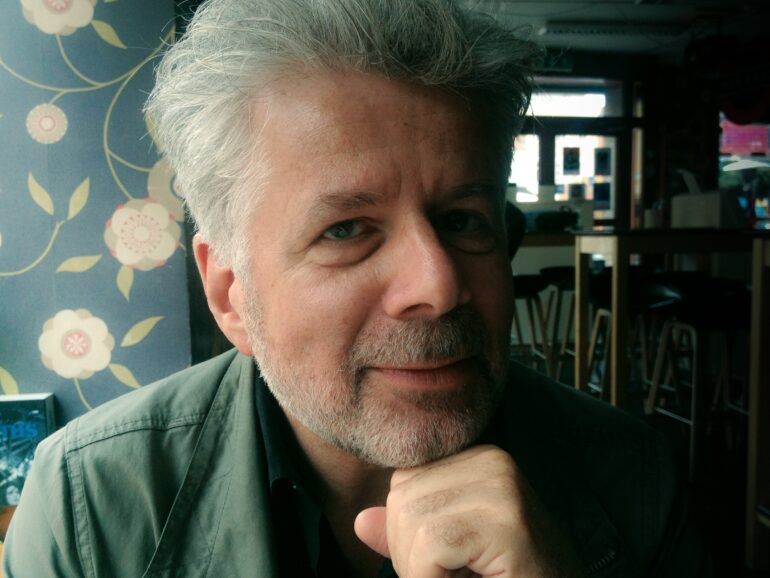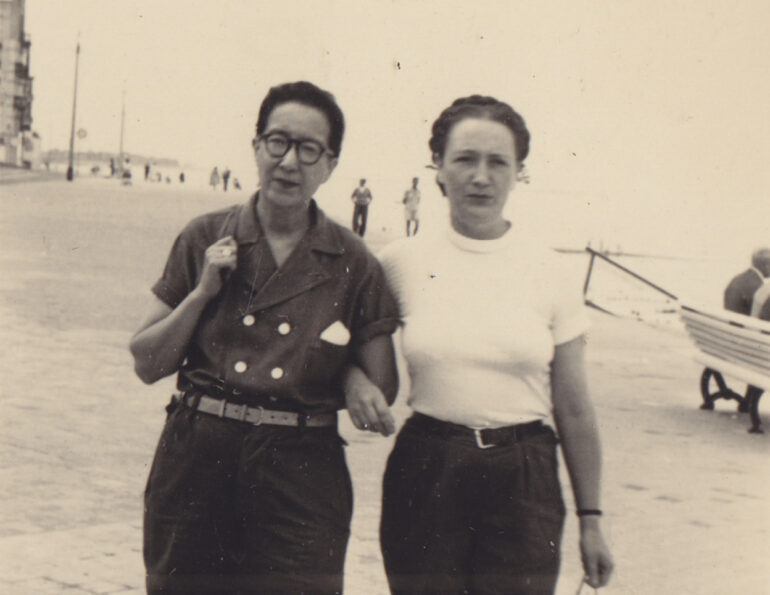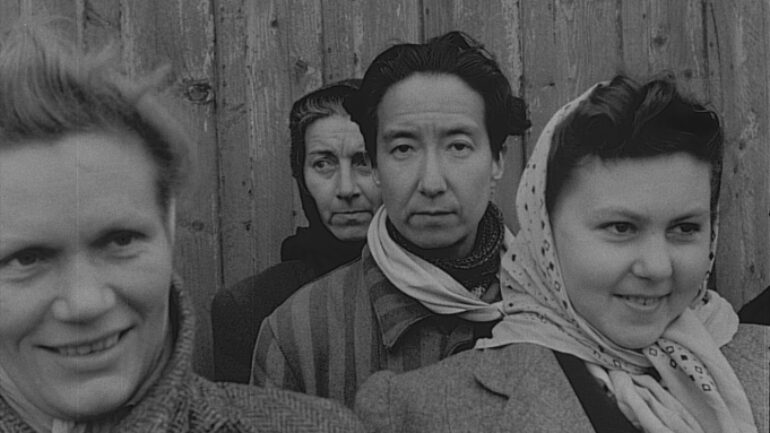WRITTEN BY: Annika Pham
The Swedish director discusses his documentary which world premiered at the Berlinale’s Panorama Dokumente.
In his third film about WW2 survivors from Nazi concentrations camps, who arrived in Malmö April 1945, Gertten focuses on the fascinating love story between Nadine Hwang who was among the 15,000 survivors, and opera singer Nelly Mousset-Vos, mother of two.
The women met on Christmas eve 1944 in the Ravensbrück concentration camp and fell in love. Separated at the end of the war, they meet again and spend the rest of their lives together in Venezuela and Belgium. Their story, kept secret for decades, is revealed by Nelly’s grand-daughter Sylvie, who opens up the woman’s personal archives, kept in her attic in a farm in Northern France.
Thanks to personal diaries, archive photos and super 8 home movies, Gertten is able to tell Nelly and Nadine’s extraordinary love story from Nelly’s inner perspective. A story of love against all odds, survival, and urge to live for who you are.
The film was produced by Ove Rishøj Jensen of Auto Images, in co-production with Belgium’s Associate Directors, Norway’s UpNorth Film, SVT, VRT CANVAS, RTBF, Film i Skåne, in collaboration with RÚV, Yle, DR, RTVSLO and support among others from Nordisk Film & TV Fond. Rise & Shine World Sales handles sales.
This is your third film focusing on some of the 15,000 survivors from the camps who arrived in Malmö in April 1945. You have identified a few faces and tracked down the whereabouts of some of them-but how were you able to get hold of Nelly’s grand-daughter Sylvie who uncovers the full story around Nelly’s relationship with the mysterious Nadine Hwang photographed in Malmö?
Magnus Gertten: It’s a long story how I ended up with this film. Already in 2007, I came across this newsreel with survivors of the camps arriving in my hometown, Malmö in 1945. I never thought I would do a WW2 film, but then I became fascinated by the faces in the newsreel and stated to think: is it possible to know who they are? I ended up making the films Harbour of Hope in 2011, then Every Face has a Name in 2015. I travelled a lot with this second film at various festivals. Just before my last screening in Paris in November 2016, I got an email from a couple called Christian and Sylvie - they just said they wanted to meet me and had a good story to tell.
We met in a bar, they were very careful, they didn’t know if they wanted to be involved or not, but they said the lady in the material-Nadine Hwang…we have her full story! She was living with Sylvie’s grand-mother Nadine.
I wasn’t sure at the beginning how to deal with this as I had done two films already, but of course, I knew they were putting an amazing love story on my lap.
Sylvie at the beginning seems reluctant to go down the memory lane - with you - of who her grand-mother really was. It must have been a complex experience for her and delicate process for you…
MG: Yes indeed. My luck was that I could be there when her process started. Usually with a film like this, you tell a story about things that happened years ago. Here, I had a present time story and development in the film. It all starts as a family secret.
When you realised that in Sylvie’s attics was this treasure box filled with photographs, notebooks, diaries, 8mm home-movies, you must have felt it’s too good to be true…
MG: Absolutely. And it was unopened. The most important find was that there was Nelly’s diary, which allowed us to tell the love story from the inside, with the words of the women themselves. That was the most amazing.
Nelly’s recounter of her experience at the Ravensbrück concentration camp is heart-wrenching. Can you explain your choice of black and white poetic images to visualise Nelly’s reflections, breaking away from the usual harrowing concentration camp images?
MG: Yes it was one of the biggest challenges to figure out what we would show. Very early on, I had the idea to use poetic archives, with rural landscape. I had used this in a previous film. I felt that these images from Henri Storck’s Symphonie Paysanne [shot between 1942-43] would resonate with Nell’s emotions. We worked over six months to figure out how to use this material.
Was Sylvie closely involved in the selection of the archive material from her grandmother?
MG: We worked in a traditional way. We stayed at her farm with her and her family, did interviews on different topics that we wanted to include, shot scenes from the farm life, and decided to do some trips with Sylvie [in Paris, Spain, Brussels] to find out more about Nelly and Nadine’s lives. But we did all the selection, editing of the material without Sylvie’s interference. She knew we needed to have our artistic independence and she trusted us in our intention to tell the best possible story.
Has Sylvie seen the film and if so, what was her reaction?
MG: It is the scariest moment for a filmmaker when you are going to screen a film to the protagonists of your film. But Sylvie is very happy with the film. She said it is true to her process. She was a bit naïve at the beginning, but that was because all through her childhood, no one had ever talked about the war, about Nelly’s lesbian relationship with Nadine. Everything was a minefield.
Beyond the harrowing description of life at the concentration the camps, the film is really about breaking taboos, social conventions and embracing who you are, which gives it a universal dimension..
MG: Absolutely. The film has a very contemporary feel. It’s often hard to give this dimension to a film with a historical context. The wonderful thing is that some young people who have seen the film at the Berlinale, told me they could relate to the story, which is about accepting who you are.
The film also tells about an interesting historical period of LGBQ Paris in the 1930s, when you trace Nadine’s life with the high-profile US lesbian Natalie Clifford Barney who held a literary salon, attended by Somerset Maugham, Scott Fitzgerald, T.S. Eliott, André Gide among other celebrities….
MG: Yes so many famous authors visited Nathalie Barney’s salon. She was a pioneer, openly lesbian, fighting for women’s rights in a patriarchal society. Today, there isn’t even a plaque dedicated to her at 20 rue Jacob in Paris where she held her famous salon for decades. I hope my film will contribute to her legacy.
What did you personally find the most fascinating about Nelly & Nadine’s story?
MG: There are so many layers in their story. But what I would say is that the bravery of these two women is unbelievable, and from Nelly’s perspective, her ability to express what happened on an emotional level is unique. I am looking forward to screening the film to larger audiences - besides the Berlinale crowd. They will tell me what the film means to them and they will teach me about my own film. That’s an important process to understand all the levels of such a film.
How difficult was it to finance the film?
MG: With my colleague at Auto Images and producer Ove Rishøj Jensen, we met a lot of enthusiastic people so I wouldn’t complain, although it’s never easy to finance a documentary. For instance, when we pitched the project at Nordisk Panorama a few years ago, we approached a TV executive from a Polish broadcaster. He said: ‘I love the story but I can never broadcast it in Poland’…this says a lot, about the film’s political edge. It makes this story all the more important to tell.
How will the film be released across the Nordics?
MG: The film will open in Swedish cinemas March 16, through Doc Lounge, and we have Nordic broadcasters [SVT, RUV, Yle, DR]. Being able to launch with a physical screening in Berlin was truly fantastic.
SEE THE TRAILER


